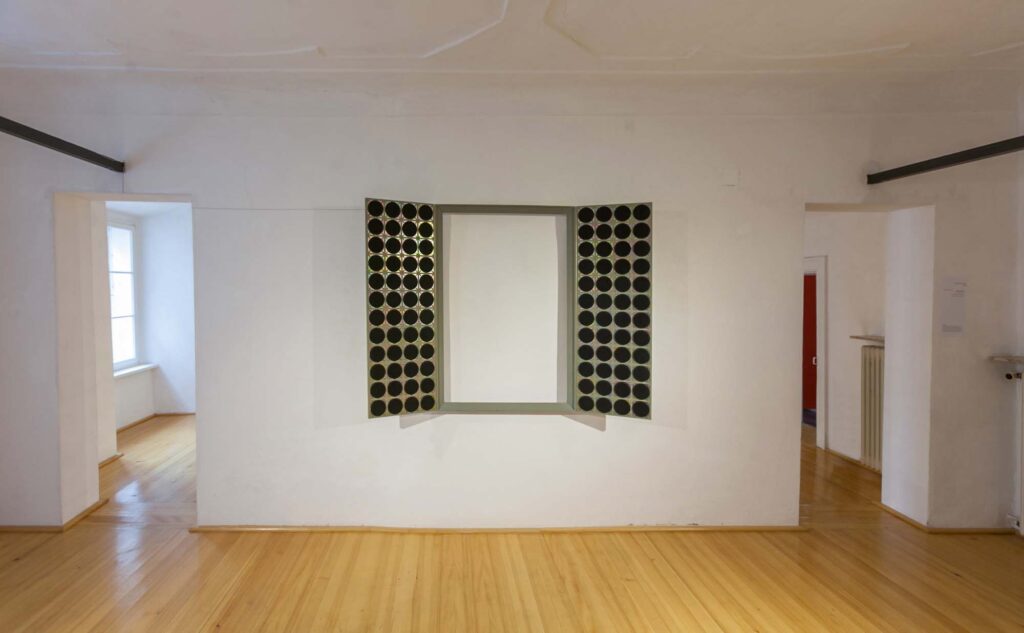
Kulturzentrum bei den Minoriten
Foto: Clemens Nestroy
Sfumato
2013, sound object.
triptych, 96 full-range speaker, wire, MDF, audio equipment, 2 channel composition, 136 x 194 cm
KULTUMdepot Graz
Sounds and tones, white and pink noise, emerge from a bipolar mesh of sound and gradually make up word fragments.
Directed hearing is disturbed, as the sounds continually get lost in the pulsating intermediate space.
Because the sound alignment is fixed, the recipients find themselves situated in a pulsating space, looking into an empty centre. This leads inevitably to self-reflection.




Photos © Clemens Nestroy, Clara Oppel, Gernot Muhr (2)
Sfumato, the title of this ‘window‘, whose side panels consist of loudspeakers, reveals the work’s origin in painting, or more precisely, Renaissance painting. Leonardo da Vinci’s painting technique produced resonances that undermined clear-cut contours. Clara Oppel’s artistic origins are in painting and sculpture. With this work, she forges a wide resonating bridge to these media, and develops them further using contemporary means that she has been developing for years in the form of sound sculptures. In addition to this, she harks distinctly back to the form of the ‘triptych‘. It arose in the context of the retable, a framed altarpiece. Here though, the centre remains empty. Into this emptiness viewers can project their own thoughts and emotions. Moreover, Renaissance painters discovered the window as a space opening up new dimensions. In the light of this historical-cultural background, the artist develops a mesh of sound that has bi-polar sources: ‘white noise‘ from the right wing, and ‘pink noise‘ from the left one. Little by little, noises and sounds emerge and combine slowly into fragments of words. Focussed listening is constantly interrupted because the sounds get lost in the vibrating in-between space. Due to the fixed direction of the sound, the recipient stands in the oscillating space, gazing directly at the empty centre. In this condensed space one gradually begins to understand the spoken sentence – which thereby breaks free of its boundaries and extends towards openness.
